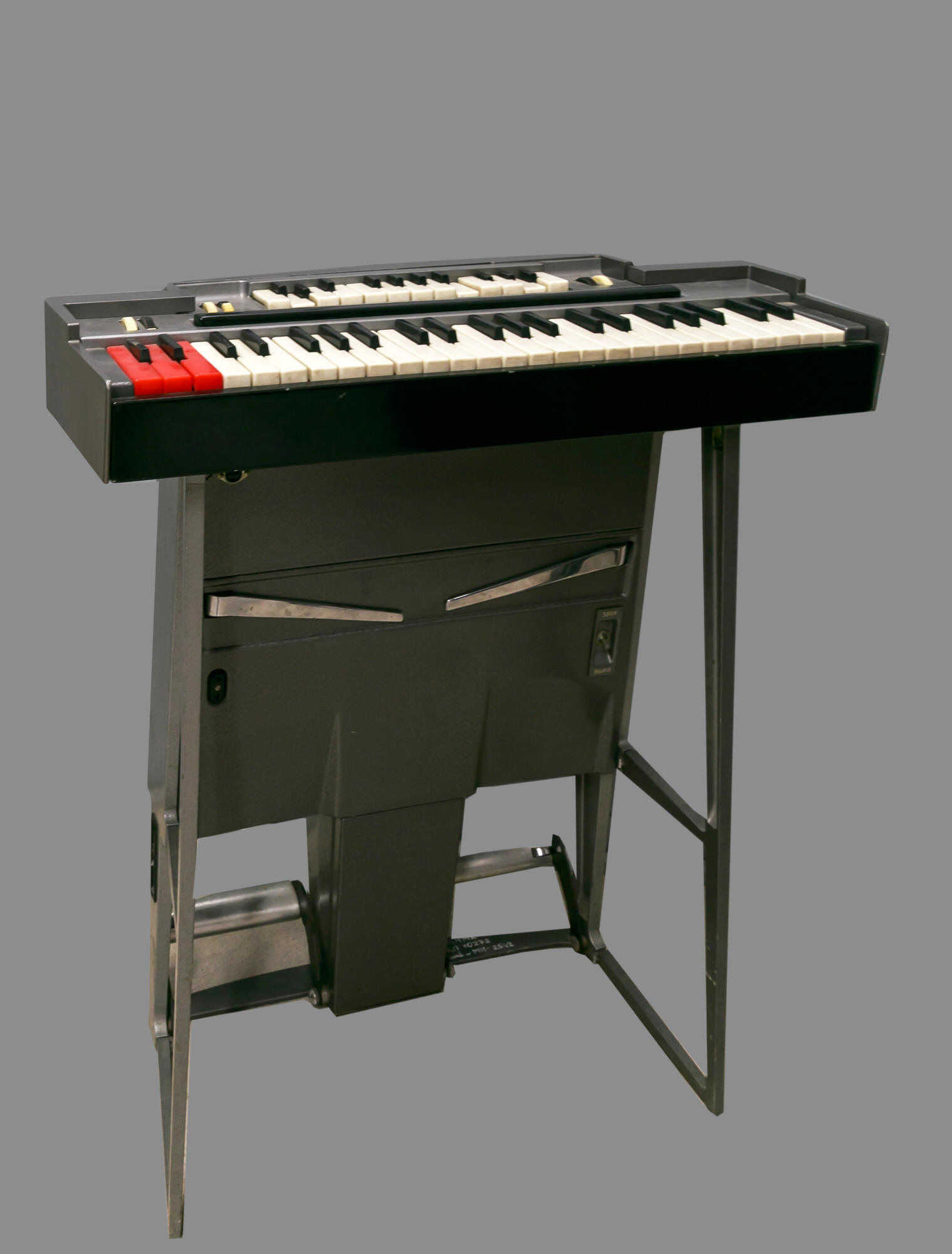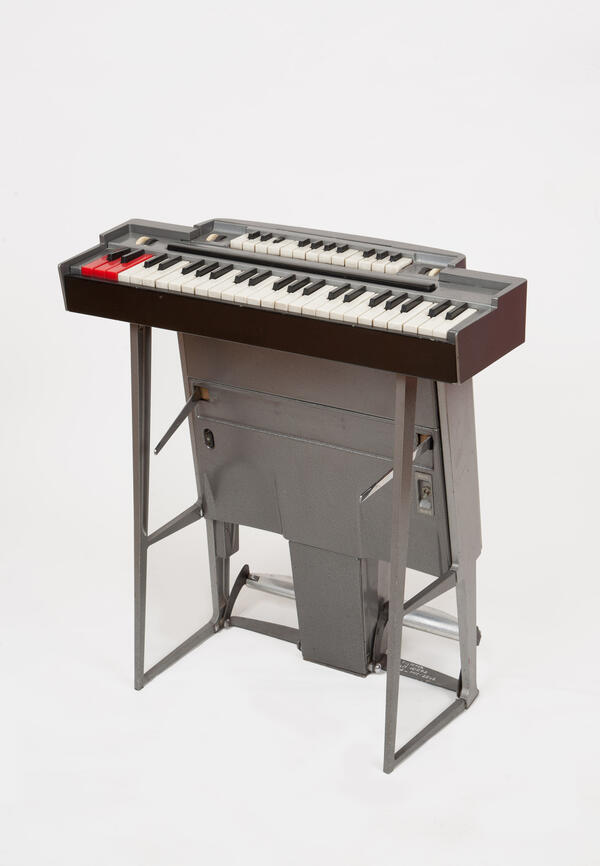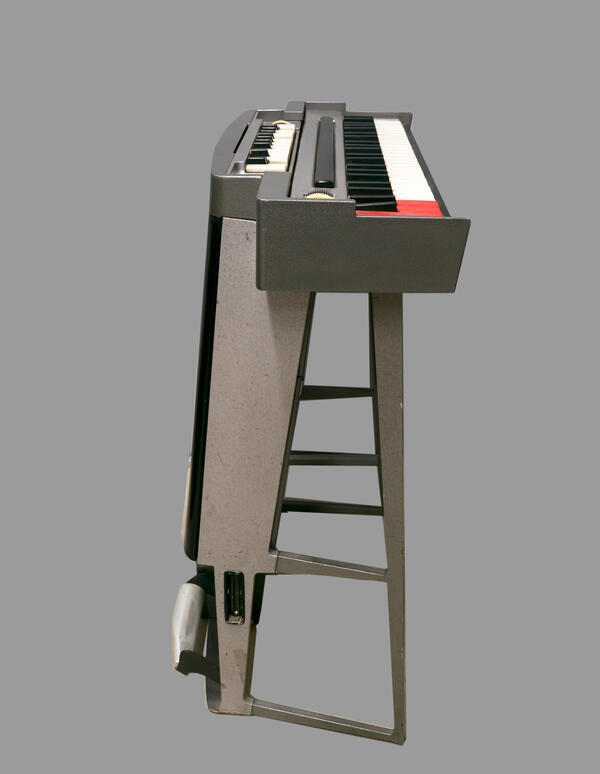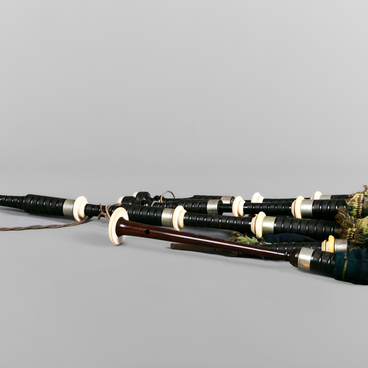Ekvodin V-11 was manufactured in Moscow in the mid-1960s by the acoustician Andrey Volodin. He patented over 40 inventions in the radio industry, including the Sokol transistor radio.
The instrument from the museum’s collection is a two-voiced analog electronic synthesizer. This is the last variation of the ekvodin created during the lifetime of the inventor himself. It has a keyboard that covers three full octaves and an additional major third interval.
The full range of the instrument is over seven octaves, which is comparable to the range of the grand piano. Ekvodin V-11 has 660 combinations of settings as well as automatic and finger vibrato. The external speaker can be placed in a way that is most convenient to the listeners.
Andrey Volodin built the first single-voiced ekvodin in 1935. Unlike the theremin, the world’s first electronic musical instrument, the ekvodin was played with direct contact from the musician.
In the new variations created after World War II, the ekvodin was transformed from a bowed instrument to a keyboard one, because the keyboard allowed an immediate and precise transition between the notes.
The 1949 model, Ekvodin V-8, was an analog keyboard synthesizer with 12 presets. They imitated the sound of various instruments, including the clarinet, the bassoon, the violin, and the cor anglais. The same year, Volodin successfully demonstrated the instrument at an extended session of the Acoustic Commission of the Soviet Academy of Sciences.
The next model, Ekvodin V-9, combined a keyboard and a fretboard. It received Gold Medals at the 1958 Brussels World’s Fair and the Exhibition of Achievements of the National Economy in Moscow.
In 1970, Andrey Volodin published his book “Electronic Musical Instruments, ” and in 1979 — a monograph with the same title. The ekvodins were often played on stage and used by Soviet composers, especially in scores for movies and theatrical productions. For example, the ekvodin can be heard in the underwater scenes of the 1961 Soviet movie “Amphibian Man.”
The instrument from the museum’s collection is a two-voiced analog electronic synthesizer. This is the last variation of the ekvodin created during the lifetime of the inventor himself. It has a keyboard that covers three full octaves and an additional major third interval.
The full range of the instrument is over seven octaves, which is comparable to the range of the grand piano. Ekvodin V-11 has 660 combinations of settings as well as automatic and finger vibrato. The external speaker can be placed in a way that is most convenient to the listeners.
Andrey Volodin built the first single-voiced ekvodin in 1935. Unlike the theremin, the world’s first electronic musical instrument, the ekvodin was played with direct contact from the musician.
In the new variations created after World War II, the ekvodin was transformed from a bowed instrument to a keyboard one, because the keyboard allowed an immediate and precise transition between the notes.
The 1949 model, Ekvodin V-8, was an analog keyboard synthesizer with 12 presets. They imitated the sound of various instruments, including the clarinet, the bassoon, the violin, and the cor anglais. The same year, Volodin successfully demonstrated the instrument at an extended session of the Acoustic Commission of the Soviet Academy of Sciences.
The next model, Ekvodin V-9, combined a keyboard and a fretboard. It received Gold Medals at the 1958 Brussels World’s Fair and the Exhibition of Achievements of the National Economy in Moscow.
In 1970, Andrey Volodin published his book “Electronic Musical Instruments, ” and in 1979 — a monograph with the same title. The ekvodins were often played on stage and used by Soviet composers, especially in scores for movies and theatrical productions. For example, the ekvodin can be heard in the underwater scenes of the 1961 Soviet movie “Amphibian Man.”






